This post may contain affiliate links. Please read our disclosure policy.
Make soothing and flavorful fresh ginger tea in under 10 minutes. Enjoy the benefits of a warming and relaxing cup of ginger tea.
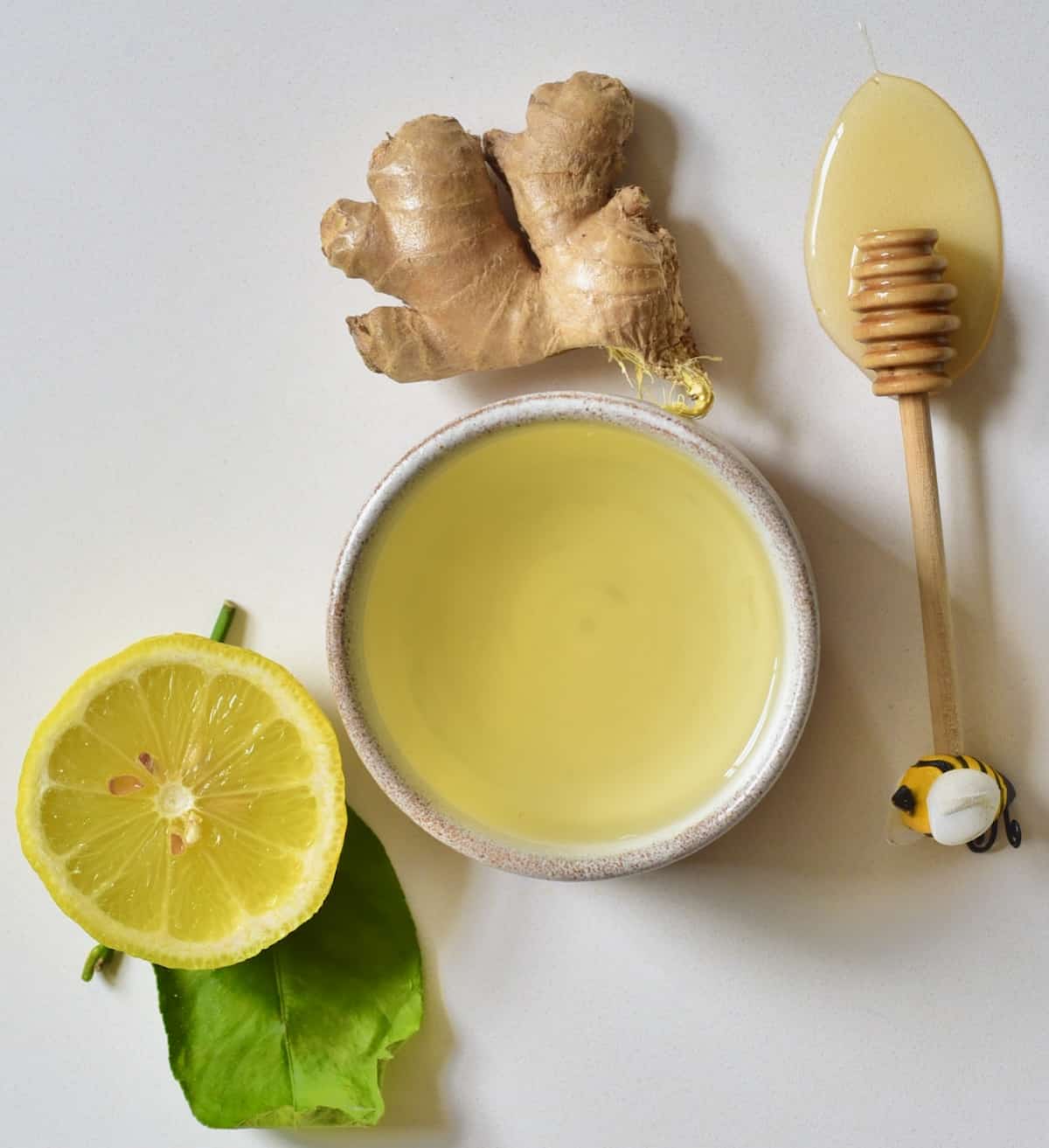
This light and spicy fresh ginger tea is probably best known as a winter drink during cold and flu season. However, it is lovely at any time of the year and works as a morning pick-me-up or evening soother (it helps with digestion, too). It is incredibly simple to make using just a few cupboard essentials and ginger. Plus, there are many ways to boost the flavor and make this ginger tea recipe even more irresistible.
I love to make mine with lemon added every single time and a small drizzle of honey. Occasionally, I mix things up with additional flavors like cinnamon or turmeric.
Want to save this recipe?
Watch how to make fresh ginger tea
Ingredients
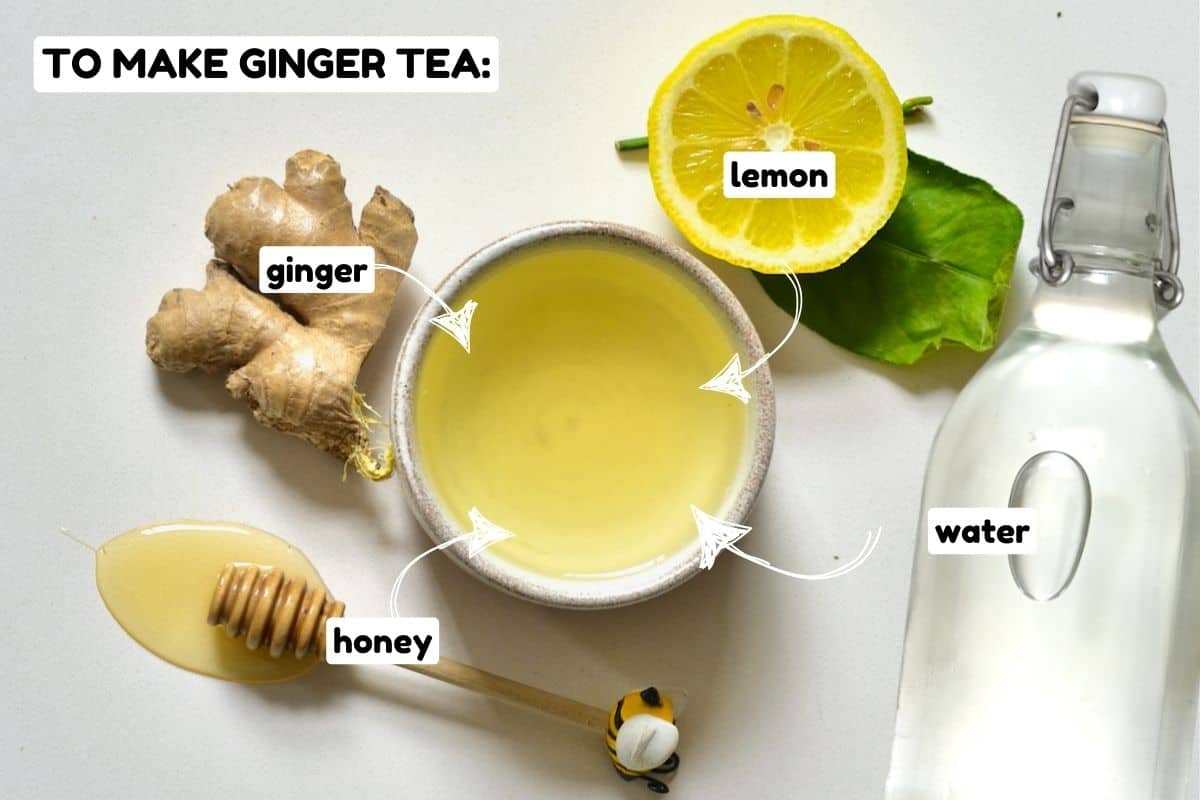
- Ginger: Choose fresh, firm-to-the-touch ginger roots.
- Lemon: Meyer lemons are usually the best as they are juicy and sweeter, but use whatever lemons you have. Adjust the amount to taste.
- Honey: or another sweetener. This is optional, but since both ginger and lemon have strong flavors, I like to mellow them out with honey.
- Water: Use tap or filtered water.
How to make ginger tea from fresh ginger
Clean and chop your fresh ginger into 1-2″ pieces. You can optionally peel the skin off using this method of how to peel, cut, grate, and mince ginger. Remove the lemon rind, as it will make the tea bitter. Then cut it into slices.
Add the water to a small saucepan and bring to a boil over medium-high heat. Then add the ginger and lemon and stir. Reduce the heat to low and let it simmer for five minutes. You can leave it for slightly longer if you want even stronger tea (up to 10-12 minutes).
Strain the tea into mugs/teacups and add a drizzle of honey. Stir well, and enjoy your ginger tea from fresh ginger! Optionally, you can also add a thin slice (or two) of fresh lemon or orange to each cup.
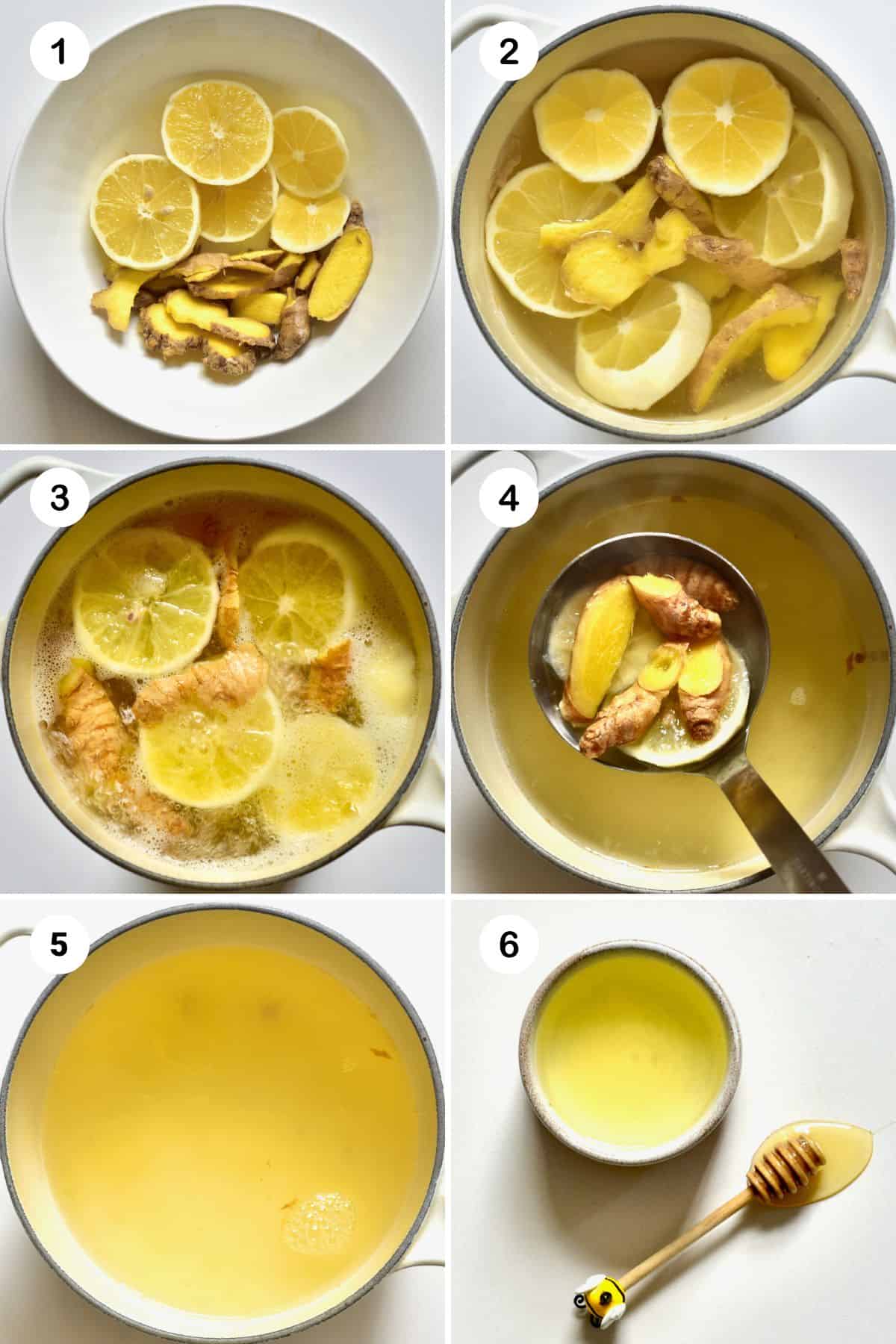
More ginger recipes
If you try this ginger tea recipe, let me know how it goes in the comments below. I’d appreciate a recipe card rating and would love to see your recipe recreations – tag me on Instagram @Alphafoodie!
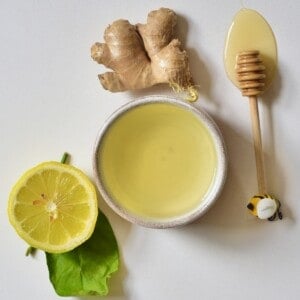
Fresh Ginger Tea
Ingredients
- 4 cups filtered water
- 3.5 oz ginger fresh root, chopped, optionally peeled
- 1 lemon sliced
- honey or another natural sweetener (optional, to taste)
Instructions
- Clean and chop your fresh ginger into 1-2" pieces. Remove the rind of the lemon, then slice it.
- In a small saucepan, bring the water to a boil over medium-high heat.
- Add the ginger and lemon to the saucepan and stir. Reduce the heat to low and simmer for five minutes. You can leave it for slightly longer if you want even stronger tea.
- Strain the tea into mugs or teacups, and add a thin slice (or two) of fresh lemon to each cup and a drizzle of honey. Stir well, and enjoy!
Video
Notes
Nutrition
Nutrition information is automatically calculated, so should only be used as an approximation.

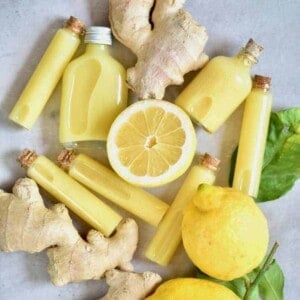
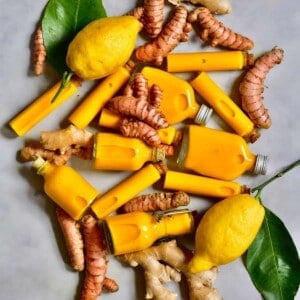
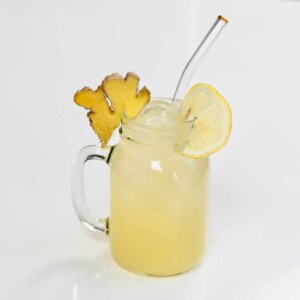









I just recovered from an abscessed tooth, but the antibiotic I took really messed up my “system” This wonderful ginger tea recipe you posted has made me feel so much better. Thank You!!
Thank you so much for your comment, Linda! Glad you tried and enjoyed this recipe.
This is useful information about Ginger tea….and it can help me a lot…. especially this pandemic it can help for our healthy boost…Thank you..
From Philippines….
Thank you for your comment, Ainee!
Before reading your article I peeled and sliced fresh ginger root into a mason jar and poured boiling water over the ginger until the jar was filled. I’m letting it seep now. Will this work as well as your recipe?
Thank you.
Hi Maggie,
Simmering the ginger allows for a stronger tea, with a more pronounced ginger flavor. Steeping the ginger in hot water works just as well, but the difference would be in the taste.
Good details.
Thank you for your comment, Erin.
Incredible points. Sound arguments. Keep up the amazing effort.
Thanks very much, glad you liked this article!
Simply and delicious recipe
Thanks so much Fabi, glad you liked it 🙂
I have tried everything to get rid of the cough so I hope it works!!
Thank you for your comment, Lori. Glad you are giving this recipe a try.
I was surprised to see you discarding the lemon zest. The zest has all the goodness of the lemon!
Thank you for your comment, Shanta. You’re welcome to add lemon zest if you prefer. 🙂
Great post! worth to read, Thanks for sharing with us.
Hi Mike,
Thank you so much for your comment. 🙂
I am so glad I found your posting. Is ginger tea is wonderful!
Thank you!
Millie
Thanks very much Millie, so glad you liked it 🙂
Great recipe. This will be a regular healthful drink in my kitchen.
Thank you so much for your comment!
Loved this! Also where do you buy most of your kitchen ware accessories? It’s the cutest!
Thank you so much, Rachel 🙂 I often buy cute pieces from different antique markets or charity shops. And occasionally something that I like online.